Under current working and living conditions, the eyes are affected by many different factors, not always positive. For this reason, questions such as dry eyes, causes and treatment are becoming increasingly relevant; can vision deteriorate in this condition or not? In order to give a complete answer, we need to consider the essence of the problem.
Why do eyes become dry?
A topic such as “Dry Eyes: Causes and Treatment” concerns many ordinary people. Often the cause of such manifestations is a pathological condition called “xerophthalmia”. The essence of this problem comes down to insufficient hydration of the conjunctiva and cornea of the eyes due to a deficiency of tear fluid and instability of the tear film.
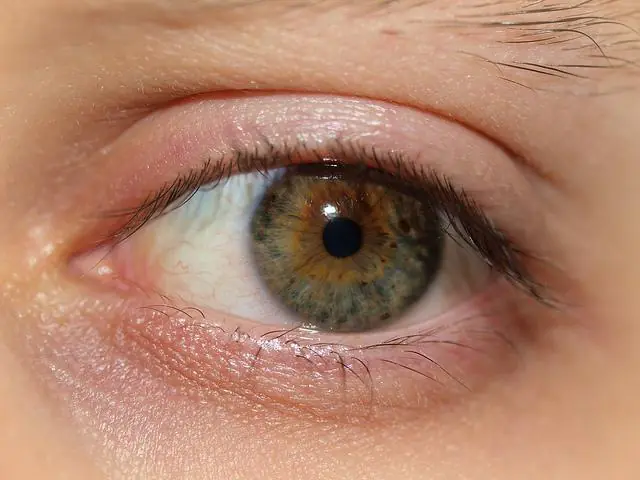
This film covers the front surface of the eye. Its thickness is approximately 10 microns. The key task of this film is to protect the eye from environmental influences, including various small foreign bodies and dust. Moreover, it is with its participation that the cornea is supplied with oxygen and nutrients, due to which a natural immune defense against infections is formed.
Structure of the tear film
When studying dry eyes, the causes and treatment of this disease, it is worth paying attention to the structure of the tear film, which consists of three layers:
— The deepest is the mucin layer. It is produced by goblet cells of the conjunctiva. In addition, the cornea is covered with this layer, due to which its surface is even and smooth. The main function of this layer is to retain the tear film itself on the corneal epithelium.
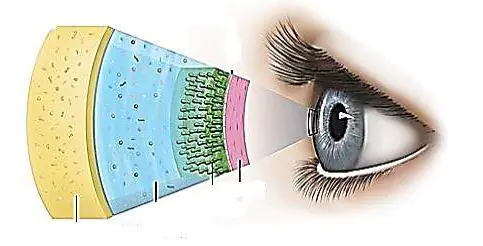
- Water layer. It is produced by the lacrimal glands. This layer consists of dissolved electrolytes and biologically active substances. It supplies the epithelium of the conjunctiva and cornea with oxygen and nutrients. Moreover, thanks to the water layer, metabolic waste, carbon dioxide molecules and epithelial cells that have died off are removed.
— Lipid layer. It is produced by the meibomian glands and coats the outer surface of the aqueous layer. Its key function is to protect the eyeball and ensure gliding of the upper eyelid. It also prevents excessive heat transfer from the epithelium of the aqueous layer and its evaporation.
As part of the topic: “Dry Eyes: Causes and Treatment,” you need to pay attention to the fact that every 10 seconds the tear film breaks, stimulating blinking. As a result, the tear fluid is renewed, leading to the restoration of the film.
In one minute, approximately 15% of the entire tear film is renewed. In this case, 8% evaporation occurs.
Dry eye syndrome can develop if the above-described tears have multiple forms. Various factors lead to ruptures of this type: impaired secretion of mucins, tear fluid and lipids, as well as very rapid evaporation of the film itself.
Causes of dry eye syndrome
There are various conditions in which there is a decrease in tear fluid production. The most common ones include the following:
— Endocrine disorders during menopause and perimenopause. We are talking about a deficiency of estrogen production.
— Severe neurological disorders, Parkinson’s disease, kidney disease, pregnancy, inflammatory eye diseases and various disorders of the visual organs, severe exhaustion, infectious and skin diseases.

— Autoimmune conditions (Sjogren's disease) and connective tissue diseases. In this case, it means uncontrolled growth of connective tissue in the body, accompanied by blockage of the excretory ducts of the lacrimal glands. The ducts are blocked by fibrous foci, which leads to disruption of the full production of tear fluid. As a result, it is incorrectly distributed throughout the cornea.
— When considering dry eyes, the causes and treatment of this disease, you need to pay attention to the negative effects of antiarrhythmic and antihypertensive drugs when taken for a long time. This practice can result in decreased body fluid production or dehydration. As a result, the total volume of tears decreases and their viscosity increases. The use of eye ointments and drops that contain anticholinergics, beta-blockers and anesthetics can negatively affect the production of tear fluid.
— Various conditions that result in the inability of the eye to close completely can also lead to dryness. For complete hydration, the eyelids must close completely.
- Using contact lenses that are the wrong size or of poor quality.
Properly selected contact lenses do not contribute to the development of myopia, but can affect changes in the tissues of the ocular surface, which is often accompanied by discomfort and dry eye syndrome. A comprehensive solution helps - the use of ophthalmic gel and eye drops.
Korneregel gel helps eliminate the causes of discomfort. It contains carbomer on a soft gel base, which maintains complete hydration, and dexpanthenol, which has a healing effect. When taking Korneregel, you should remove contact lenses or, using a gel for prevention, apply it at the end of the day, at night.
Those who feel discomfort and dryness throughout the day should choose Artelak Balance drops, which combine a combination of hyaluronic acid and vitamin B12. Hyaluronic acid forms a film on the surface of the eye that provides hydration. The moisturizing effect of hyaluronic acid prolongs the special protector. Vitamin B12 is an antioxidant that protects cells from damage by free radicals.
For those who experience discomfort occasionally and usually towards the end of the day, Artelak Splash drops containing 0.24% hyaluronic acid are suitable.
There are contraindications. You need to read the instructions or consult a specialist.
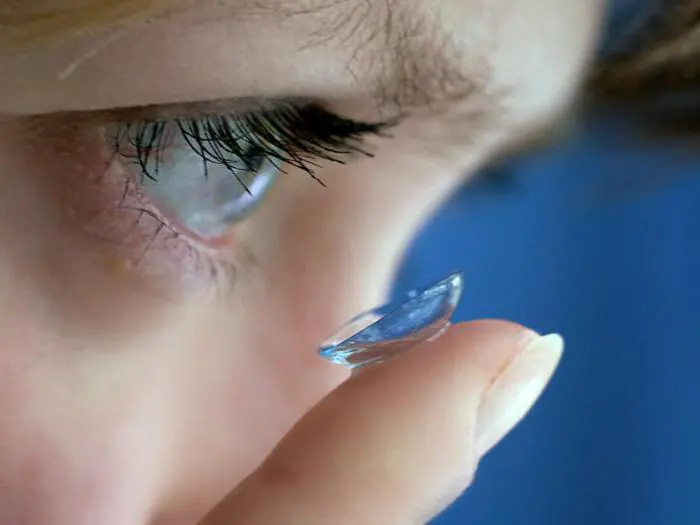
Disruption of rest and sleep patterns and environmental factors can also play a negative role in the development of dry eye symptoms.
The cause of dry eyes in the morning may have a lot to do with one or more of the factors mentioned above.
In general, the development of dry eye syndrome is more common for people living in climate zones that require the use of air conditioning and heating systems. This is due to the fact that exposure to dry air causes fluid to evaporate from the surface of the eyes.
Who is at risk
When considering dry eyes, the causes and treatment of this disease, it is important to determine who should be wary of such a problem. First of all, this disease can manifest itself in residents of megacities, since the level of air pollution has a direct impact on the incidence of dry eye syndrome.
Residents of high mountain areas may also face a similar problem. As for living conditions that can affect the condition of the eyes, these include long-term work at the computer. According to research, more than 70% of women and 60% of men who work in an office at a PC have problems with the function of the lacrimal glands.
The topic “Dry eyes - causes and treatment at the age of 50” is also relevant.,since women in this age category experience a decrease in estrogen levels in the blood. This, in turn, leads to insufficient hydration of the eye.
Dry eye syndrome - symptoms
In most cases, the symptoms of this problem are unclear, but sometimes, due to the development of complications, quite noticeable disturbances in well-being may appear.
We are talking about the following signs of the disease:
- sticking of the eyelids in the morning;
- a feeling of “sand in the eyes” and dryness, which can increase during the day;
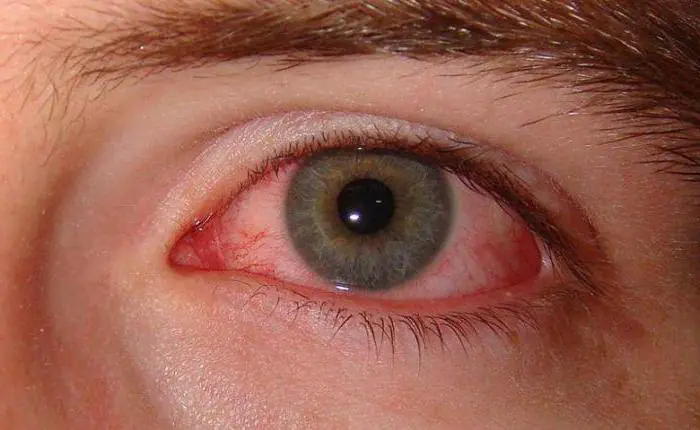
— while blinking, clarity of vision is lost.
If the eyes in this condition are exposed to heat or smoke, the severity of the symptoms may be significantly higher.
This disease also has more severe forms of manifestation:
- severe pain in the eyes that is difficult to endure;
- increased sensitivity to light;
- significant redness of the eyes that does not go away for a long time.
In some cases, even corneal injury is possible. Therefore, if such symptoms appear, you should consult a doctor.
Treatment methods
If dry eyes occur, the causes and treatment in children and adults should be determined by a qualified physician. Therefore, diagnostics are initially carried out: cytology of a smear from the conjunctiva, analysis of tear fluid, biomicroscopy, as well as Norm and Schirmer tests (with their help, the rate of formation and subsequent evaporation of tear fluid is determined).
Once the cause of the disease is determined, various treatment methods can be used, from artificial tears to surgery.
Within the framework of the topic “dry eyes, causes and treatment,” drops deserve special attention, since with their help they can neutralize the problem at various levels of development.

Doctors often prescribe medications that restore a stable tear film on the surface of the eyes. If you have to deal with a mild form of the syndrome, drops with a low viscosity level are often used. If the patient has a moderate and severe form, then drops and gels of medium (“Lakrisin”) and high viscosity (“Oftagel”, “Vidisik”, “Korneregel”, “Lakropos”) are prescribed.
It is worth noting that gels with high viscosity turn into a liquid state during the blinking process. This allows you to ensure the desired level of corneal hydration.
Anti-inflammatory and antibacterial agents
Dry eyes often cause inflammation. In this case, antibiotics and immunosuppressants may be prescribed. We are talking about such medications as hormonal drops "Dexamethasone", "Oftan", "Maxidex" and drops with cyclosporine "Restasis".
When studying dry eyes, causes, treatment and effective effects on this problem in general, you need to pay attention to antibacterial agents. They are used to neutralize inflammatory diseases, which often cause dry eyes. We are talking about ointments with tetracycline and erythromycin. They are usually prescribed in a course of 7-10 days. They are used before bedtime.
There are other methods that can effectively treat dry eyes. Causes and treatment (reviews confirm this) often imply such an effective method of influencing the disease as an implantable container containing a tear replacement fluid. Install it in the lower eyelid.
Surgical exposure
There are several types of minor surgeries that can affect dry eyes. If they are successfully completed, normal production and maintenance of the required amount of tear fluid is restored.
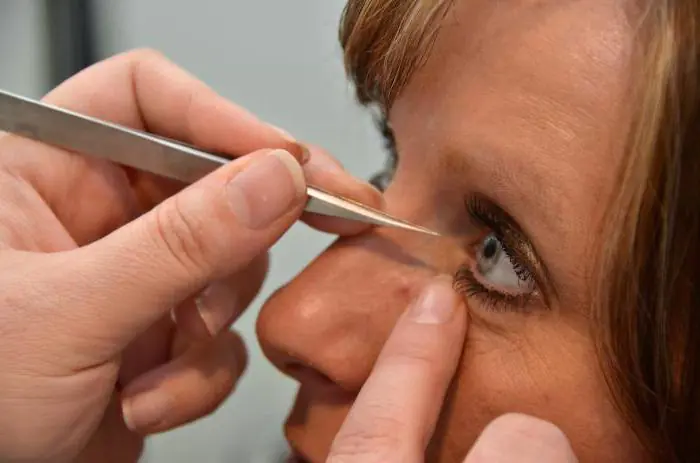
An example is occlusion of the tear ducts, which drain fluid from the eyes. If they are blocked, the liquid will begin to accumulate on the outer surface of the eye, which leads to its moistening. To block the ducts, plugs are used, which are removed if necessary. This procedure is not complicated, but it can significantly improve the patient’s condition.
If after this operation the problem has not been solved, cauterization of the tear ducts can be used.
Traditional methods
There are several other methods that are worth mentioning when studying the topic of dry eyes - causes and treatment. Folk remedies can be used to overcome many common diseases, and this syndrome is no exception.
Several recipes can be cited as examples of this approach:
- Chamomile decoction. You need to brew chamomile. Cotton pads are soaked in the resulting decoction and applied to the eyes for 10-20 minutes. It is advisable to do this while lying down.
- Tea lotions. The same principle is used with the use of cotton pads, only regular tea is brewed, and strong.

- Use of honey. This healing product is dissolved in water and used in the form of compresses.
In general, when studying dry eyes, the causes and treatment of this disease with folk remedies, it is worth noting that it is important not to forget about an integrated approach to the recovery process.
Prevention
In order to prevent the occurrence of dry eyes or consolidate the results of treatment, you need to follow a few simple principles:
- ensure that the humidity level in the house is approximately 30-50%;
- use humidifiers during the cold season;
- protect your eyes from direct air currents and especially strong winds;
- use sunglasses.
conclusions
Obviously, dry eyes can result from a number of different factors. For this reason, both before and after treatment, it is important to ensure that the cause of the problem does not continue to have a negative impact on the lining of the eye.
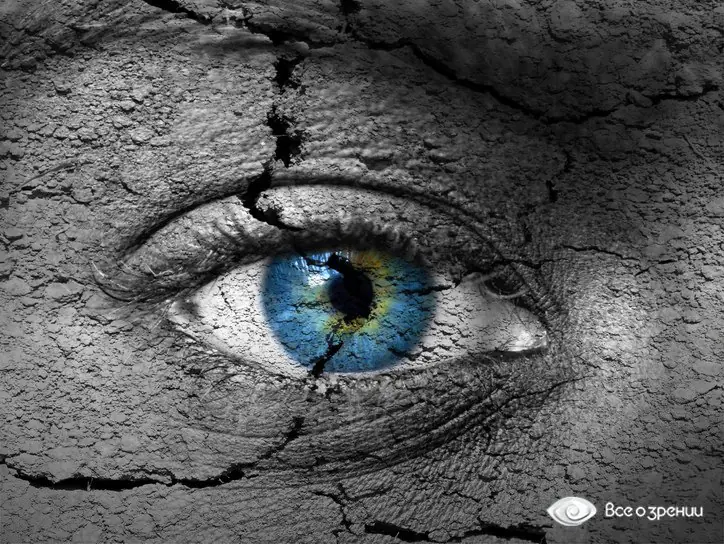
What is dry eyes?
The outer surface of the eyeball should always be moistened. In the mucous membrane of the eye, special glands produce tear fluid.
When the eye blinks, tears are distributed evenly over the entire surface of the eye, forming a protective film. When tear production decreases or its composition changes, dry eyes develop.
Dry eyes are a subjective sensation that occurs due to a lack of eye hydration. Dry eyes are most common in women.
Dry eyes - symptoms
Symptoms include:
- Feeling of burning and irritation
- Occasional blurred or decreased visual acuity
- Increased tearing, especially when reading, driving, or watching TV
- The appearance of mucous, viscous, whitish discharge, especially in the morning
- Photophobia
- Inability to wear contact lenses
When should you see a doctor urgently?
Having the above symptoms does not mean that you have dry eye. However, if you have one or more of the above symptoms, contact your ophthalmologist immediately for a complete examination.

Causes of dry eyes
There are many reasons for the appearance of this symptom:
Ocular causes
- Refractive surgery (LASIK, keratoplasty, etc.) After surgery on the cornea, dry eyes may develop.
- Eye drops. Many medications that are instilled over a long period can cause this symptom of dry eyes. These include steroid eye drops and drugs that reduce eye pressure.
- Chronic blepharitis. The cause of a significant percentage of dry eyes is an insufficient amount of oily secretion, which is produced by the meibonium glands of the eyelids.
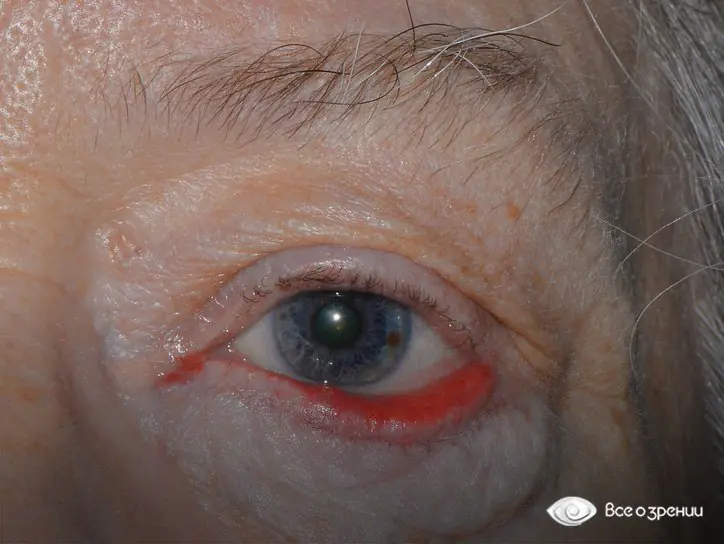
- Lagophthalmos. Incomplete closure of the eyelids due to aging and sagging eyelid muscles or as a complication after eyelid surgery (blepharoplasty)
- Long-term wearing of contact lenses
- Pregnancy
- Vitamin A deficiency
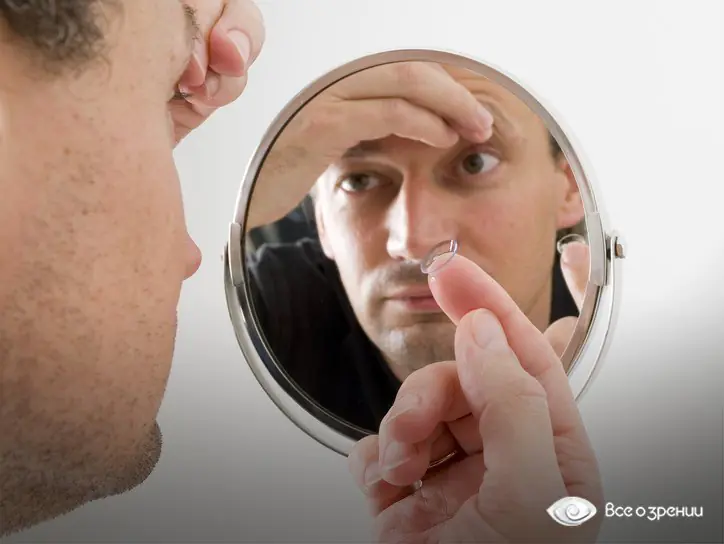
General diseases
Diseases such as rheumatoid arthritis, diabetes mellitus, and herpes zoster lead to decreased tear production and the development of dry eye.
Hormonal changes
Hormonal changes associated with menopause are the main cause of dry eye development in women.

Constant use of medications
A wide range of medications can cause dry eyes (see Diuretics, beta blockers, sleeping pills, antidepressants, antihistamines).
Physical factors
Prolonged exposure to or exposure to harsh environmental conditions can lead to the development of dry eye.
Treatment for dry eyes
Dry eye syndrome is usually a chronic condition. In most cases, treatment results in improvement and relief of the eye condition.
Artificial tears
Artificial tear eye drops are similar in composition to our own tears. They moisten the eyes and help retain moisture.
Artificial tears are available without a prescription.
There are many options on the market, so you can try several to find the one you like best. In case of increased sensitivity of the eye mucosa and frequent instillation, it is recommended to use artificial tears without preservatives.
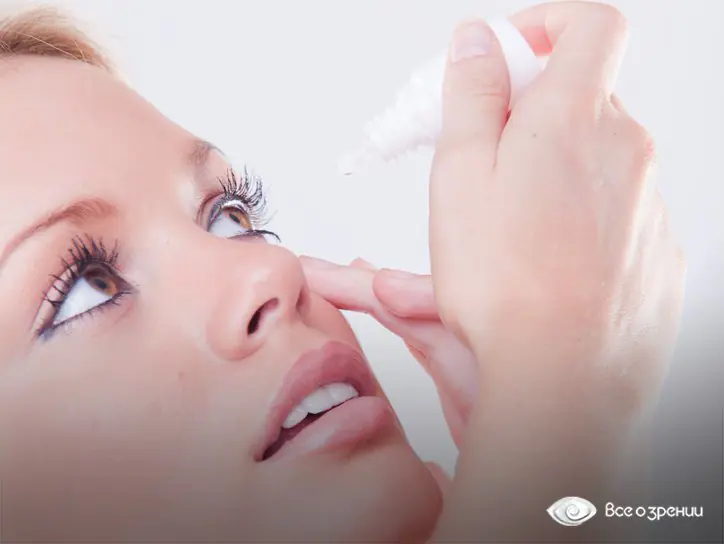
Temporary method of closing tear ducts
The tear ducts are temporarily closed with special plugs. They block the tear duct and the tear film in the eye becomes more stable, reducing dryness. Tears simply evaporate from the surface of the eye.
Gland massage
For chronic inflammation of the eyelids and insufficient production of oily secretions, massage of the meibonium glands is recommended.
What should you absolutely not do?
If you experience symptoms of dry eye, you should not:
- take any medications on your own
- instill vasoconstrictor eye drops without a doctor’s prescription
- wear soft contact lenses
What happens if the symptom is not treated?
If the symptom of dry eye is not treated, complications such as inflammation of the cornea, corneal ulcer, and loss of vision may develop.
Treatment of dry eyes with folk remedies
Warm compresses. An alternative to massage is warm compresses on the eyelids to soften the secretion of the glands and facilitate its removal. Warm compresses are made from chamomile infusion.

Honey drops. In some cases, putting honey drops into the eye helps. Honey is diluted with boiled honey in certain proportions.
This method has contraindications for use. Therefore, be sure to consult your ophthalmologist before using.
Preventing dry eyes
If you have initial symptoms of dry eyes, you should do the following for prevention:
Blink more often
When using a computer, smartphone or other digital device, we tend to blink less often. As a result, dry eyes may develop. Make a conscious effort to blink frequently when using these devices. In addition, you can periodically close your eyelids completely and close your eyes to renew the tear film.
Take frequent breaks while using the computer
Make it a habit to look away from your screen every 20 minutes and look at something that is at least within your reach for at least 20 seconds.
Following this simple rule will not only prevent the development of dry eyes but also preserve your vision.
Avoid aggressive environmental factors
A person with dry eyes should avoid anything that may worsen these symptoms. For example, being in an excessively hot room, in the wind. Smoking causes the development of dry eye.
Tears evaporate faster in a hot room, like any other liquid. You can take steps to prevent evaporation. In winter, during the heating season, be sure to use a humidifier.
Drugs for the treatment of dry eye syndrome
Dry eyes or dry eye syndrome is an eye disease caused by “dry eye,” which in turn is caused by either decreased tear production or increased tear evaporation. Tears are essential for maintaining eye health and ensuring clear vision. In people with dry eye syndrome, either an insufficient amount of tears is produced, or the properties of the tears and, as a result, their quality are impaired. Dry eyes are a common problem, especially for people over 40 and office workers.
Causes of Dry Eyes in the Office
By the middle of the working day at the office, you may feel a little lethargic and notice that you often rub your eyes. Most likely, the air in your office is too dry. The second cause of DRY EYE SYNDROME is working at a computer for eight hours a day, which really has a negative impact on your eyes. After all, we blink significantly less when we are focused on a computer or mobile phone. Turning on the air conditioner, not blinking, and fluorescent lighting all contribute to eye fatigue, itchy and dry feelings, and drowsiness.
Did you know that the air in the office is often five to seven times dirtier than the air outside? When we turn on the air conditioner, we always close the windows, creating a sealed “bubble” of dirty air circulating throughout the office. The sources of harmful substances are: office equipment, detergents, even paper. Scary, isn't it? Plants can help clean the air! You can protect your sensitive dry eyes from harmful substances by purchasing a small plant for your office desk. And ophthalmic moisturizing solutions, preferably without preservatives, such as HILO-KOMOD®, HILOZAR-KOMOD®, HILOMAX-KOMOD®, HILOPARIN-KOMOD® will help relieve the unpleasant symptoms of the syndrome.
Why do we feel dry eyes?
With each blink of the eyelid, tears are distributed evenly across the surface of the eye, known as the cornea. Tears provide lubrication, reduce the risk of eye infection, wash away foreign objects, and keep the surface of the eye smooth and clean. Excess tears flow through small drainage channels into the inner corners of the eyelids and then into the side of the nose. The appearance of dry eye syndrome leads to improper tear formation and distribution.
- Not enough tears. Tears are produced by glands around the eyelids. With age, with various diseases or as a side effect of certain medications, this process is disrupted. Unfavorable environmental conditions, such as wind, or a dry climate can also affect tear production by increasing the evaporation of moisture from the surface of the eye. When the normal functioning of the gland is disrupted and tears evaporate too quickly, dry eye syndrome can develop.
- Low tear quality. Tears are made up of three parts: fat, water and a sticky substance (mucin). Each component performs a function to protect and nourish the surface of the eye. A thin layer of fat helps prevent the evaporation of the aqueous layer, while mucin helps distribute tears evenly across the surface of the eye. If tears evaporate too quickly or unevenly due to deficiencies in any of the three layers, the cornea may develop dry eye syndrome.
The most common form of the syndrome is in which an insufficient amount of the aqueous layer of tears is produced. This condition is called keratoconjunctivitis sicca, also called dry eye syndrome. Dry eye syndrome is a complex of signs of xerosis of the surface of the eyeball due to prolonged disruption of tear production or increased tear evaporation. People with dry eyes experience the following symptoms: irritation, gritty eyes, itchy or burning eyes, sticky eyelids, a foreign sensation in the eyes, excess tearing, discomfort when wearing lenses, or blurred vision. Intensification of the syndrome can lead to damage to the cornea and deterioration of vision. Treatment for dry eye syndrome is aimed at restoring and maintaining a normal amount of tears in the eyes to minimize discomfort and dry eye, as well as maintaining eye health.
What causes dry eyes?
The following factors contribute to the occurrence of dry eye syndrome:
- Age Dry eye syndrome can be part of the natural aging process. Many people age 65 and older experience some symptoms of dry eye.
- Floor - Women are more prone to the syndrome due to hormonal changes caused by pregnancy, oral contraceptive use and menopause.
- Medicines - Some medications, including antihistamines, decongestants, blood pressure medications, or antidepressants, may reduce the amount of tears you make.
- Diseases - People with rheumatoid arthritis, diabetes, or thyroid problems are more likely to experience dry eye syndrome than others. In addition, problems related to inflammation of the eyelids, cornea, or eye muscles can cause dry eyes.
- Wearing contact lenses worsens the water-fat balance of the cornea, which contributes to “dry eyes”.
- Environmental conditions - exposure to smoke, wind and dry climates increase the evaporation of moisture, resulting in symptoms of dry eye syndrome. The inability to blink regularly, such as when a person looks at a computer screen for an extended period of time, can also cause moisture to dry out from the surface of the eyes.
- Other factors - Long-term use of contact lenses can be a significant factor in the development of dry eye syndrome. In addition, eye surgeries, such as laser vision correction, can lead to deterioration of the lacrimal glands and “dry eyes.”
How to diagnose dry eye syndrome?
Dry eyes can be diagnosed through a comprehensive eye examination. The examination of the patient, with particular emphasis on assessing the quantity and quality of tears produced, should include the following steps:
- Patient historyto determine the symptoms the patient is experiencing, the presence of general health problems, medications they are taking, or environmental factors that may be causing the dry eye problem.
- External eye examination, including paying attention to structure and blinking ability.
- Evaluation of eyelids and corneas using bright light and lens. A slit lamp examination may be performed to diagnose dry eye syndrome and confirm any damage to the eye.
- Study of the quantity and quality of tears for any pathologies. Special dyes are instilled into the eyes in order to better observe the uniformity of its distribution or with breaks and highlight any changes in the cornea of the eye caused by an insufficient number of tears.
Using the information obtained from the patient's examination, the optometrist can determine whether the patient has dry eye syndrome and advise on treatment options.
Dry eye treatment
One of the main approaches used to treat dry eye syndrome in order to increase the quantity of tears and improve its quality is the use of moisturizing ophthalmic solutions, such as HILO-KOMOD®, HILOZAR-KOMOD®, HILOMAX-KOMOD®, HILOPARIN-KOMOD®.
Dry eyes can be a chronic condition, but with timely treatment, you can keep your eyes healthy, more comfortable, and protect your vision from external factors.
- Adding a tear. Mild cases of dry eye can often be treated with targeted addition of tears in the form of HILO-KOMOD® solution. These drops can be used as needed to supplement the natural hydration of the eyes. Hylo-KOMOD® moisturizing ophthalmic solution does not contain additives that irritate the eyes, and does not contain preservatives.
- Saving tears is a complementary approach to reducing dry eye symptoms to keep natural tears in your eyes longer. This can be done by blocking the tear ducts through which tears normally drain. Tear ducts can be blocked using tiny silicone or gel-like plugs, which can be removed if necessary.
- Surgery used to permanently block the tear ducts. Either way, the goal is to keep existing tears in the eyes for as long as possible to reduce problems associated with dry eyes.
- Improving tear quality. The best recipe is a moisturizing ophthalmic solution HILO-KOMOD®, which helps increase the formation of tears, as well as nutritional supplements with omega-3 fatty acids.
- Treatment of inflammation of the eyelid or cornea. HILO-KOMOD® solution or special ointments are suitable. In addition, warm compresses and eyelid massage will help reduce inflammation.
Self-medication
You can also help yourself. To relieve dry eye symptoms, do the following:
- Remember to blink regularlywhen reading or looking at a computer monitor for a long time. Take frequent breaks from work.
- Maintain good eye hygiene, wash your face regularly with warm, clean water. Increase the level of humidity in the air at work and at home.
- Buy for the office houseplant and humidifier.
- Install on your desktop larger font size, tilt the monitor slightly downward.
- Wear sunglasses, especially with frames that fit your face well to reduce exposure to wind and sun.
- Follow a food diet, including foods that contain essential fatty acids in your diet can help reduce dry eye symptoms.
- Avoid anything that increases dry eyes, for example, an excessively warm room, a hairdryer, or smoke.
- Drink more fluids (8 to 10 glasses per day).
- Use HILO-KOMOD® moisturizing ophthalmic solution, to moisturize the eyes
Thus, to prevent the symptoms of dry eye syndrome, you need to eat right, blink regularly, and maintain eye hygiene. And to treat “dry eyes” it is necessary to use moisturizing solutions, such as HILO-KOMOD®, containing substances that are as similar as possible to natural tears.



